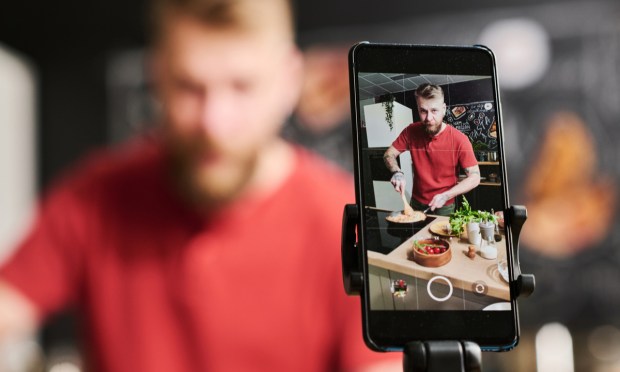
Creators and influencers have moved beyond their conventional roles as simple product endorsers, and transformed into trusted advisers who play a pivotal role in shaping the consumer journey. Across all age groups, these individuals can hold substantial influence, offering insights, recommendations, and connections with their audiences.
“Creators are becoming this new distribution channel that can do that very authentically,” Kit Ulrich, general manager of creator shopping at LTK, told PYMNTS CEO Karen Webster in October.
Read more: LTK’s Ulrich on How Payments and AI Turn Creators Into Shoppable Stores
A key factor contributing to creators becoming trusted advisers is their adeptness at conveying authenticity and relatability. In contrast to conventional advertising, which often feels scripted and distant, creators establish personal connections with their audiences. They share genuine experiences, opinions and emotions, fostering a sense of trust that resonates across generations.
Furthermore, creators frequently specialize in specific niches, building expertise in areas such as beauty, technology, travel or fitness. By consistently delivering valuable content within their chosen domains, creators earn the trust of their audiences, who appreciate their depth of knowledge. Audiences turn to these influencers for guidance and recommendations in areas they are passionate about.
As an illustration, PYMNTS highlighted the success of Meredith Hayden, a chef in her 20s recognized as “WishBoneKitchen” on TikTok. With over 1 million followers, she captivates her audience by featuring consistently inventive dishes. A major attraction is her documentation of the extended and unconventional hours she puts in as a private chef in the upscale beach towns of the Hamptons in New York.
Also read: How Brands Are Collaborating With Experts, Influencers and Nonprofits to Connect With Consumers
Creators also harness social media platforms for real-time engagement, fostering a sense of community and enabling influencers to understand the evolving needs and preferences of their followers.
Moreover, the transparency in creators’ partnerships with brands contributes to the trust they build with their audience. Clear disclosures about sponsored content and collaborations underscore the authenticity of creators’ recommendations, ensuring followers are aware of any commercial relationships. This transparency reinforces the trust between creators and their audience.
That said, the evolution of creators into trusted advisers becomes most evident in their impact on purchasing decisions. Going beyond product endorsements, creators guide their audience through the entire consumer journey — from product discovery and research to the final purchase. Consumers increasingly rely on influencers for product reviews, tutorials and personalized recommendations, turning creators into indispensable sources of information.
“We’re seeing shoppers come direct to our creators,” Ulrich said.
In fact, reports indicate that 66% of Gen Z and millennials engage in shopping and making purchases through creators, while 56% of the broader population chooses to buy from creators, marking a 64% increase from the previous year.
TikTok has become a game-changer for small and medium-sized businesses (SMBs) hungry for exponential growth. Its reach and engagement levels have transformed it into a digital marketing paradise, offering opportunities for SMBs to reach a massive audience without breaking the bank.
Yet, while the idea of going viral sounds pleasing for both creators and SMBs, two key factors have emerged as the linchpin for the success of SMBs on TikTok: authenticity and consistency.
Sujatha Mamidibathula, head of SMB at TikTok, told PYMNTS it is a mistake to focus on virality alone, advising, “My suggestion is for SMBs to focus on community. Focus on building that and virality will come to you.”
Mamidibathula emphasized the importance of consistently crafting captivating TikToks. This involves a dual approach: building a robust presence on the platform and nurturing a vibrant community. While achieving virality is appealing, relying solely on the hope that a video goes viral can be a narrow and frequently frustrating pursuit.
Mamidibathula also pointed out that to truly grasp the dynamics of virality and connect with a target audience, one needs to invest time in both their product and the platform. Often, those who attain virality are surprised themselves.
See also: TikTok Says SMBs Can’t Go Viral Without Understanding This First
As 2024 focuses on translating innovations from 2023 into tangible outcomes, companies will need to adopt a more discerning approach in their collaborations.
In the initial stages of influencer marketing, creators garnered swift financial support and attention from companies eager to tap into social media trends. However, this year, businesses are less inclined to indiscriminately allocate money to any influencer who crosses their path.
In 2024, as brands get more organized, they want measurable results. Keep in mind, two influencers that seem alike might get different results. Companies are now looking at things like community engagement, not just the number of followers. They’re also checking the kind of relationships creators have with their audience.
This change could bring about more opportunities for niche influencers. But remember, even niche followings have mega influencers. So, with this shift, there could be increased opportunities for additional micro influencers.